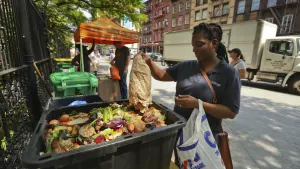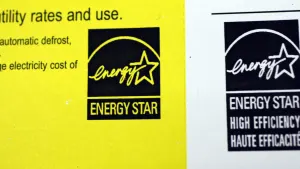More Stories
Going green does not have to be an expensive and time-consuming practice.
You can incorporate the small, environmentally friendly habits below into your everyday life to help you make a positive impact on the planet.
1. Reduce purchases
Everyone’s favorite sustainable tip is “reduce, reuse, recycle,” but we tend to focus on reusing and recycling more than reducing. To create a more environmentally friendly lifestyle, and save money, make an effort to only purchase items that are truly essential. Not only can you cut down on the consumption of single-use items like water bottles and paper towels, plus packaging from a store and online purchases, but lowering your purchasing habits can give your budget a major boost. When you’re considering making a purchase, ask yourself how necessary the item is - can you borrow or rent it instead? If not, opt for second-hand purchases when possible!
2. Minimize driving
Not only is this tip good for the environment, but it’s great for your budget and your health! Cut down on gas consumption and pollution by choosing to walk, jog, bike, skate, or some other form of physical activity that gets you to your destination. If this isn’t an option for you based on accessibility or functionality, options like taking public transportation or carpooling with friends, family, or coworkers are a great alternative.
3. Meal prep
Meal prepping is often a tip suggested for those looking to create a healthier lifestyle, but it’s also great for those looking to develop a more sustainable lifestyle! By carefully planning meals, shopping for specific ingredients, and portioning out meals ahead of time, we can reduce food waste and, in turn, save money. Meal prepping can cut down on spontaneous takeout and restaurant purchases, which tend to come with single-use plastics and non-recyclable packing, and can encourage the consumption of food you already have at home.
4. Cut down on heating and air conditioning
Spring is a great time to consider how you’re heating and cooling your home. When the weather allows, turn off your thermostat and open the windows to naturally regulate the temperature and air out your home. For days when you need the heat or air conditioning on, try to slowly raise or lower the temperature by 3-4 degrees over a week or so. This will allow your body to adjust to the change in temperature and you’ll see some major savings on your next energy bill! Here are some more tips to save money while helping the planet.
5. Visit your local farmer's market
Many often associate organic and locally grown foods with high costs, but this is not the case if you purchase the right foods at the right times! Finding a local farmer’s market in your area is a great way to support local farmers and discover in-season produce that fits your budget. Plus, these foods are typically grown with fewer pesticides and added hormones, which can be harmful to the environment.
6. Unplug
Have you ever heard the term “energy vampires?” This refers to appliances that, when plugged in, keep drawing power even when they’re not in use. According to the Department of Energy, the energy drawn from these appliances can cost between $100 and $200 a year in additional costs. Unplug your unused appliances and consider investing in a couple of power strips that you can plug all of these appliances into and easily switch off at night or when you leave your home for maximum efficiency and savings.
7. Resell your clothes
Reselling and buying used clothes is good for your wallet and the environment. Here are some websites and retailers that buy and sell new or used clothing, shoes, accessories, and even art.
More from News 12
3:03

be Well: Mulch and natural fertilizers
2:12

be Well: Tips for watering your garden
2:38

be Well: Eco-friendly products
1:59

be Well: Pest control tips
1:02

Composting can save money, help gardens and save the planet. Here are 10 tips to get you started
0:51
